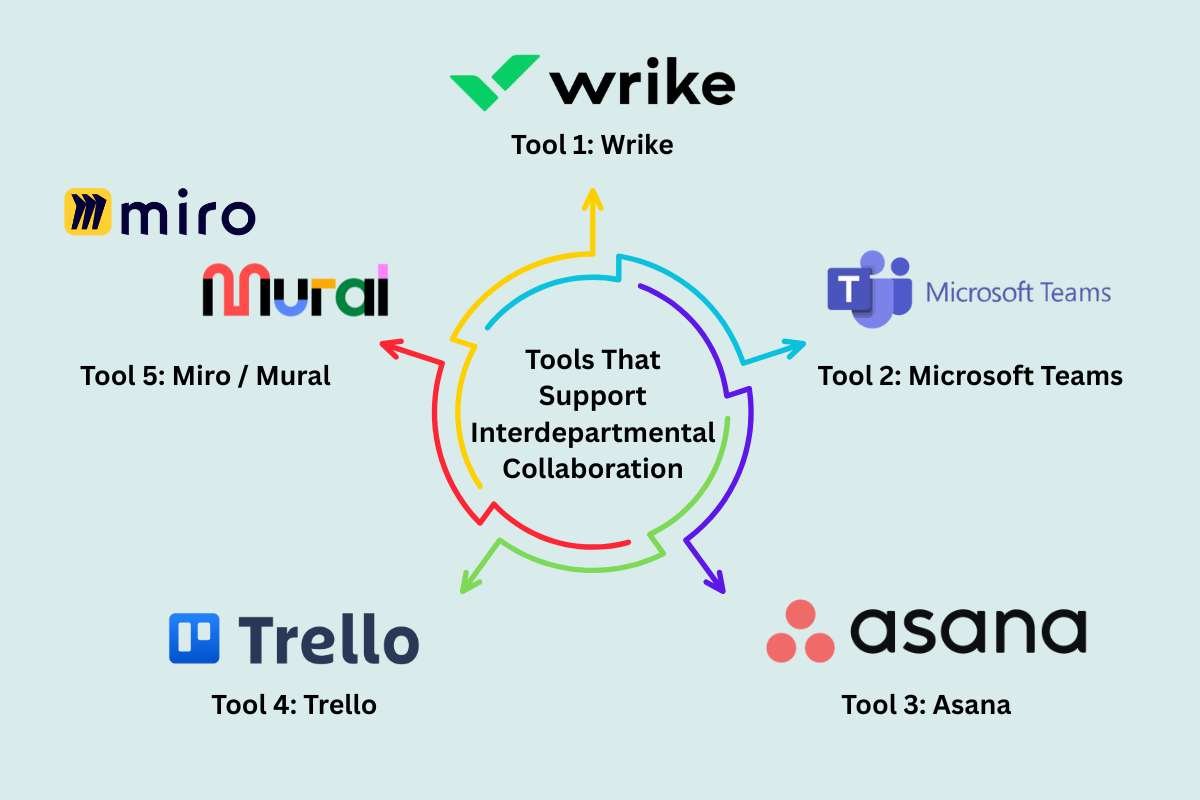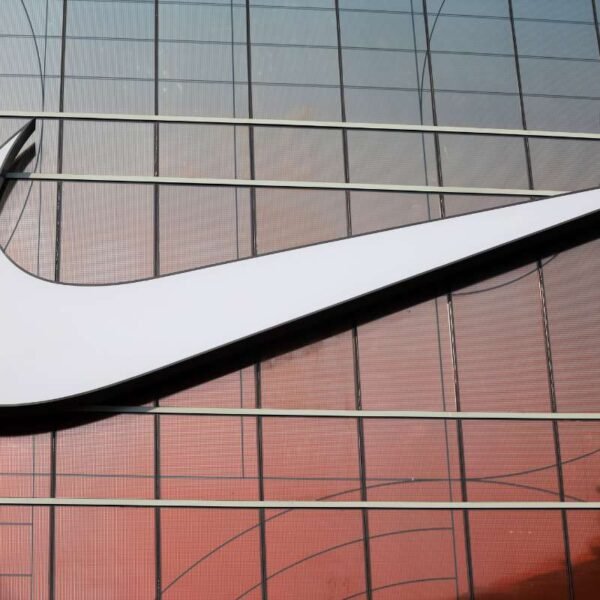86% of Employees say Lack of Interdepartmental Collaboration Leads to Workplace Failures — Here’s How to Fix It
A shocking 86% of employees and executives blame workplace failures on poor collaboration and communication. However, most teams continue to function in groups that are disconnected, misaligned, and frequently not aware of what other departments are doing.
Marketing launched a campaign, but sales weren’t informed. Product teams roll out a new feature, but customer support hears about it from frustrated users. These are signs that a system is malfunctioning. This is where interdepartmental collaboration becomes a game-changer.
Top companies like NETFLIX, AMAZON, and GOOGLE have one thing in common: seamless communication across departments. When data scientists collaborate with product managers, and when HR aligns with leadership on culture, the result is faster innovation, better decisions, and higher employee satisfaction.
Successful businesses actively collaborate across all departments in an AI-driven world. And the numbers prove it:
- McKinsey found that businesses with strong cross-functional collaboration are up to 5x more likely to deliver high performance.
- Organizations that embrace collaborative tools see productivity improve by 20–25%.
- Yet 75% of cross-functional teams still underperform due to poor coordination.
In this blog, we’ll show you exactly how to bridge those gaps. You’ll learn:
- What does interdepartmental collaboration really mean?
- Real examples of companies doing it right
- Common roadblocks and how to fix them
- Tools and AI platforms that foster smarter teamwork
If you are a C-suite decision-maker, department head, or startup founder, this guide will help you realize the full potential of teamwork and set up your company for long-term success.
What is Interdepartmental Collaboration?
Interdepartmental collaboration is the process of different departments within a company working together. These departments not just communicate, but connect their goals, responsibilities, and workflows to achieve success.
It’s like building a house: the architect (design team), contractor (operations), electrician (IT), and interior designer (marketing) all have different roles. However, if they don’t coordinate, the entire structure collapses. The system becomes inefficient and over-budget. An interdepartmental collaboration plan out the blueprint for each department.
When NIKE launched its eco-friendly “Move to Zero” campaign, it wasn’t just a marketing initiative.
- Design teams created sustainable products,
- Operations improved supply chains to reduce emissions,
- Marketing shaped the brand message, and
- Finance worked to check that the changes were scalable.
Without alignment across these departments, the campaign wouldn’t have had the same impact. This is a classic example of interdepartmental collaboration driving brand innovation.
Why Interdepartmental Collaboration is Critical in 2025?

Success in 2025 will depend more on having the most connected team than having the largest team. When departments work together, companies move faster, solve problems smarter, and avoid costly mistakes. Here’s how:
1. Reduces Duplicate Work
Working in silos often leads to multiple teams unknowingly doing the same job. This simply leads to wasting time and resources. In many large companies, HR and Operations may create separate onboarding processes. In which one is assigned for policy, and another for logistics. This leads to overlapping and creates confusion for new employees and extra workload for internal teams. When these departments collaborate, they combine efforts into one efficient system.
A Forbes Council study found that streamlined collaboration reduces redundant work by up to 25%, improving workflow and team clarity.
2. Encourages Knowledge-Sharing
Great ideas don’t live in one department. Collaboration helps teams share insights that lead to better results. At Netflix, cross-functional “postmortem” meetings after product launches include engineering, content, customer support, and data teams. Everyone learns from wins and failures.
This creates a culture of continuous improvement.
According to Harvard Business Review, teams that actively share knowledge make decisions 2x faster and with fewer errors.
3. Aligns Departments with Company Goals
When departments pull in different directions, progress slows. Collaboration keeps everyone aligned on what matters most. Amazon’s “working backwards” method starts with customer needs and involves teams from marketing, product, logistics, and finance in early planning. Everyone is clear on the “why” — before the “how.” This keeps product launches customer-centric and minimizes friction between teams.
McKinsey reports that organizations with aligned cross-departmental goals are twice as likely to meet or exceed their performance targets.
Expert Insight:
“Cross-functional collaboration isn’t just teamwork — it’s the key to faster, smarter outcomes.” — Brian Halligan, Co-founder, HubSpot
Interdepartmental collaboration is not just a trendy term, it’s a business advantage. It drives innovation, cuts inefficiency, encourages learning, and ensures every team supports the bigger picture.
Common Barriers to Interdepartmental Collaboration
Even the most well-intentioned teams can struggle when collaboration hits invisible walls. From mismatched goals to communication silos, these barriers aren’t just common; they’re costly.
To truly understand the challenges, here’s a data-backed look at the most cited obstacles identified by global reports and workplace studies:
Key Barriers Backed by Research:
| Barrier | When Identified | How It Was Identified |
| Silo Mentality | 2015 onward | Highlighted in Salesforce & ProofHub workplace studies analyzing productivity and team isolation. |
| Communication Breakdowns | 2014 | SHRM surveyed 400 companies, finding miscommunication as a key driver of project delays and losses. |
| Misaligned Goals & KPIs | 2018 | Gallup research showed misalignment between personal goals and company objectives, impacting engagement. |
| Technological Disconnect | 2022 | Remote work accelerated tech overload. RingCentral reported lost productivity due to disjointed tools. |
| Lack of Trust/Accountability | 2021–2023 | PwC & Coursera studies show trust issues asbarriers to collaboration and accountability across teams. |
Understanding these barriers is the first step toward building collaborative systems that scale. Addressing these friction points early can ensure there are smoother workflows, faster execution, and stronger alignment across teams.
Tools That Support Interdepartmental Collaboration
The correct tools can make the difference between operational disorder and connected performance in today’s mixed workplaces. Here’s a look at some powerful platforms that have transformed interdepartmental collaboration and how they continue to evolve.

Tool 1: Wrike
- Introduced: 2006
- Primary Purpose: Project Management
Wrike enhances cross-departmental collaboration with real-time dashboards, task dependencies, and workload views. Its integration capabilities helped Siemens cut planning time by 30%, while Google teams used it to improve alignment across marketing and product units.
Tool 2: Microsoft Teams
- Introduced: 2017
- Primary Purpose: Communication and file sharing
With built-in chat, video calls, and file sharing, Teams supports seamless communication across departments. During COVID-19, it enabled over 1 million organizations, including Accenture, to stay connected and reduce internal emails by up to 80%.
Tool 3: Asana
- Introduced: 2008
- Primary Purpose: Task Management
Asana’s timeline views, task assignments, and goal tracking tools make it easy to manage complex workflows. Companies like Spotify and Airbnb used it to improve team visibility and reduce task duplication during major campaigns.
Tool 4: Trello
- Introduced: 2011
- Primary Purpose: Visual task planning
Trello’s visual boards, cards, and checklists make project tracking intuitive. Teams at eBay and Google used it to coordinate workflows, reduce miscommunication, and streamline content planning across departments.
Tool 5: Miro / Mural
These tools offer digital whiteboards for real-time brainstorming and visual planning. IBM and Atlassian use them to run virtual workshops and agile sprints, cutting planning time by 20% and boosting remote engagement.
These tools have become central pillars of cross-functional collaboration. Especially in hybrid environments, platforms like Teams and Miro bridge geographical divides and promote transparent, real-time input across departments.
Similar Articles:
- Business Collaboration 101: Joint Ventures vs Partnerships
- Mastering Business Collaboration: Strategies, Tools & Templates for Seamless Teamwork
- The Enterprise Powerhouse: A Comprehensive Guide to Enterprise Resource Planning (ERP)
Measuring the Success of Interdepartmental Collaboration
Investing in interdepartmental collaboration is only worthwhile if it drives results. To ensure your efforts are effective, organizations must adopt clear performance indicators that align with business outcomes.
Key metrics that successful companies use to measure cross-functional collaboration:

1. Project Delivery Timelines
Fast and predictable delivery is a hallmark of strong collaboration. For example, Adobe uses project timeline benchmarks across departments to ensure product teams, marketing, and design remain synchronized. According to Adobe’s project leads, this approach led to a 15% acceleration in time-to-market for major campaigns.
2. Team Satisfaction & Sentiment Surveys
Employee feedback is a critical proxy for collaboration quality. Salesforce, through internal surveys on collaboration and culture (using tools like Culture Amp), identified communication gaps that, once addressed, resulted in a 22% improvement in team satisfaction scores within a year.
3. Goal Alignment Metrics
When departments are aligned, goals don’t clash—they converge. At Unilever, each team’s KPIs are linked to shared company OKRs (Objectives and Key Results), enabling marketing, supply chain, and product development to work toward a unified outcome. This alignment has been credited with improving campaign ROI by 25%, according to internal reports.
4. Engagement in Cross-Functional Meetings
Tracking meeting engagement via speaking time, decision-making involvement, or follow-up task ownership offers a window into collaboration depth. For instance, Slack observed that in organizations using structured agendas and collaborative planning, meeting effectiveness increased by 32%, as reported in their Future of Work survey.
- Note: Use platforms like Officevibe , Culture Amp , or 15Five to gather anonymous feedback and track long-term trends in interdepartmental collaboration.
By monitoring these metrics regularly, leaders can shift from reactive troubleshooting to proactive collaboration design—transforming cross-functional work from a struggle into a strategic asset.
Final Thoughts: The Future of Interdepartmental Collaboration
As we move deeper into 2025, we should remember that these collaborations are no longer optional. It’s a strategy.
With the rise of AI-driven work platforms, predictive analytics, and asynchronous workflows, teams must find ways to stay aligned across time zones and departments. Tools like Notion AI, ClickUp AI, and Microsoft Copilot are already changing the way cross-functional projects are planned and executed.
Meanwhile, hybrid work presents both a challenge and an opportunity. According to McKinsey, over 58% of employees in global firms now work in hybrid or fully remote settings, increasing the importance of digital collaboration tools.
- Action Step: Take a moment to audit your organization’s current collaborative practices. Are the right tools in place? Are KPIs being tracked? Are employees empowered to work across silos?
The future belongs to organizations that collaborate seamlessly. Make sure yours is one of them.










